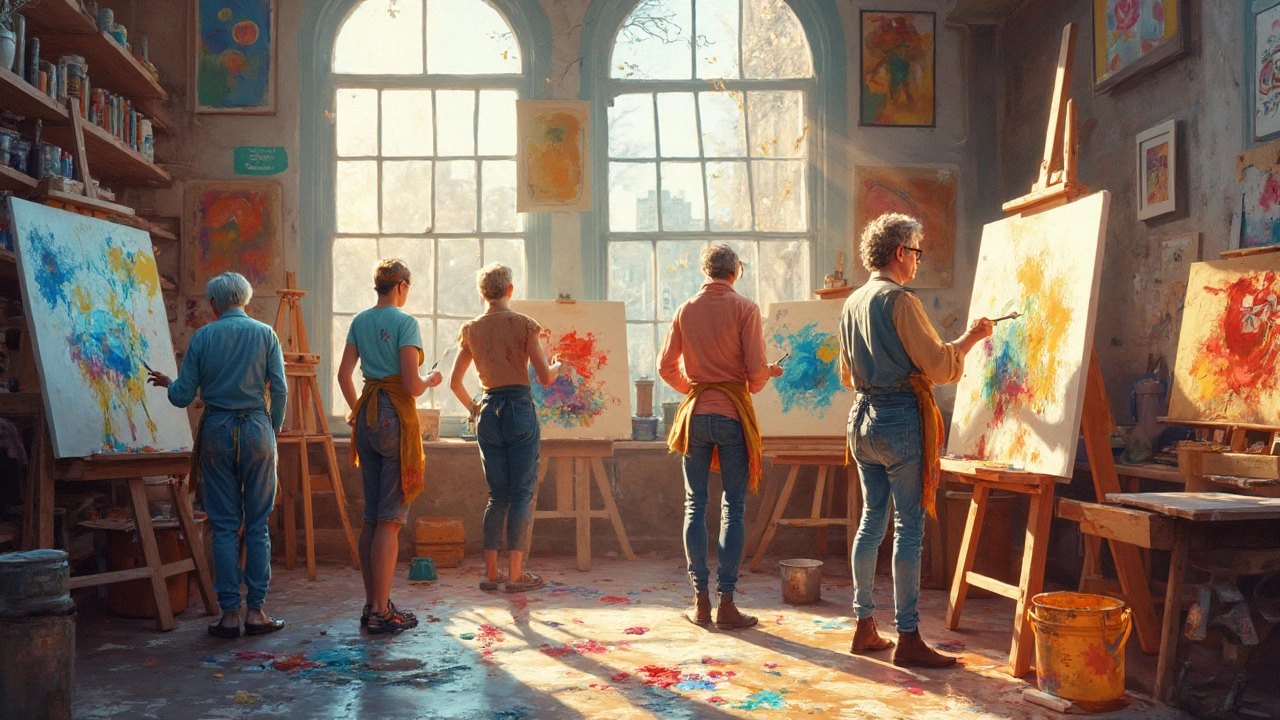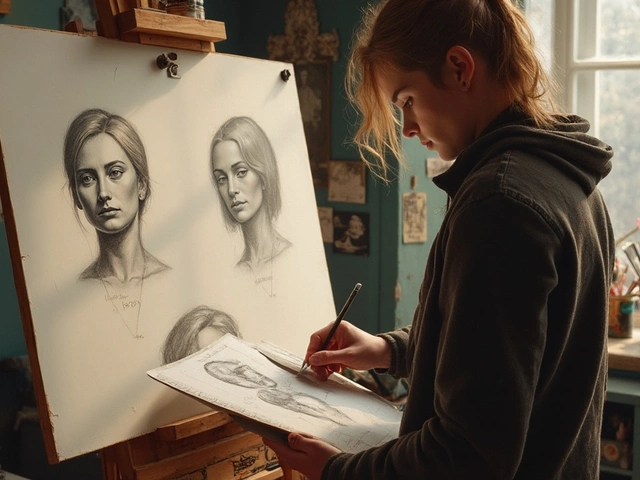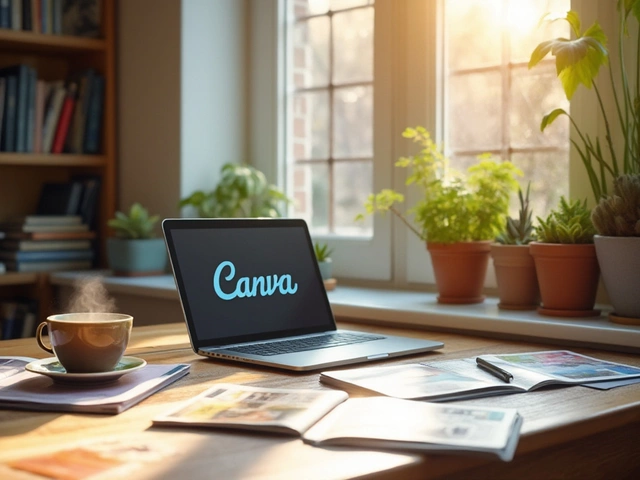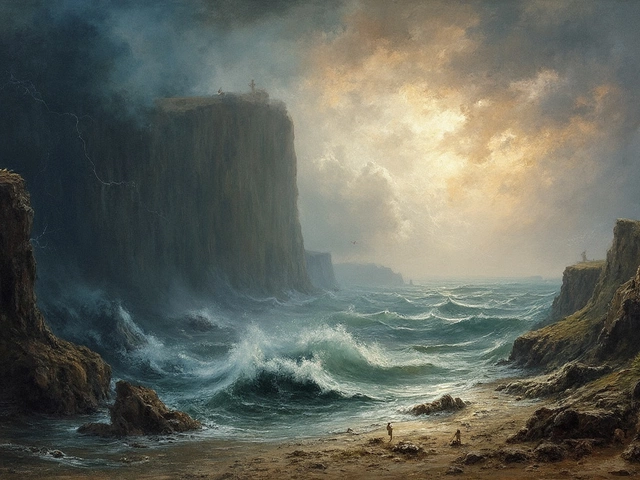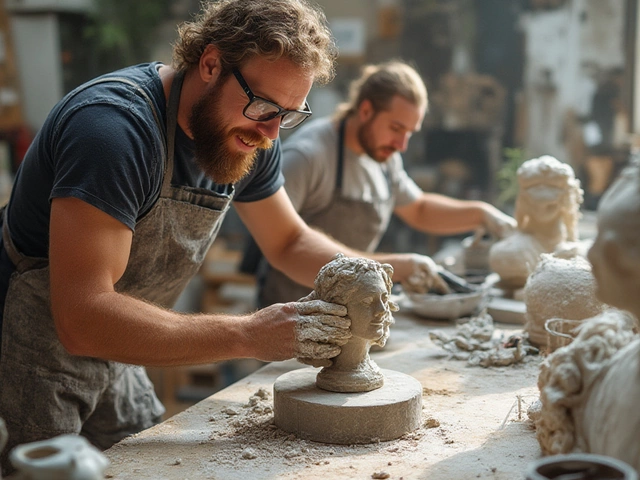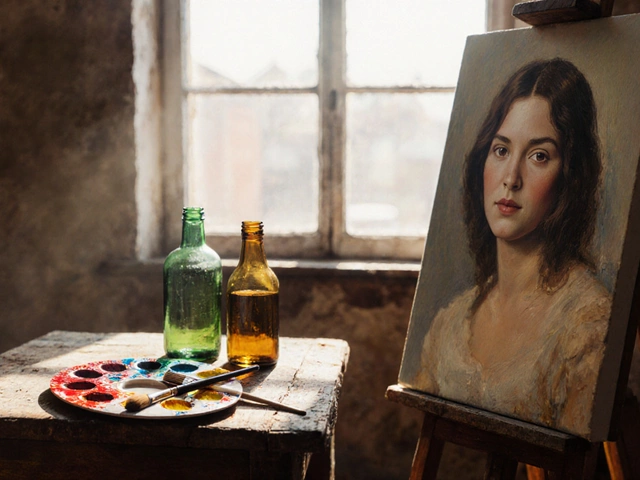Ever stare at a splashy painting in a gallery and think, “I could do that”? You’re not alone. Abstract art makes a lot of people wonder if you need some secret talent, or if it’s just about throwing paint at a canvas.
Here’s the deal—abstract art strips away rules we’re used to in regular painting. No realistic trees, no perfect portraits. That can feel freeing, or honestly, a bit scary. But it also means there’s a huge space for new people to jump in, even if they’ve never painted before.
But here’s where it gets interesting: just because there aren’t set rules doesn’t mean anything goes. People can tell the difference between a piece that feels thrown together and one that really grabs them—even if they can’t explain why. There’s still thought, feeling, and sometimes even a bit of planning behind it. If you want to give it a shot, you don’t need expensive gear or a fancy studio. You just need some cheap paint, a canvas, and a willingness to mess around and make mistakes. The best way to start? Just start. The paint can always be covered up and tried again. No one gets it right the first time, even the pros.
- What Exactly Is Abstract Art?
- The Common Myths (And Why They Stick)
- Do You Need Talent or Training?
- Hands-On: How to Start Creating Abstract Art
- What Separates a Hobbyist from a Pro?
- Tips to Find Your Own Style and Voice
What Exactly Is Abstract Art?
If you’ve ever looked at wild colors and odd shapes and wondered what you’re looking at, yeah, you’ve probably seen abstract art. Most folks think of abstract art as the opposite of paintings that look like real life—think random lines, color blocks, splatters, and weird patterns. But there’s more to it than just tossing some paint around.
Abstract art skips the realistic details. Instead, it’s all about showing feelings, ideas, or pure visual fun without trying to copy what stuff looks like in real life. Artists like Wassily Kandinsky, Piet Mondrian, and Jackson Pollock made this style famous about a hundred years ago. Their goal? Get people to feel something, not just see it.
| Famous Abstract Artists | Signature Style | Year Active |
|---|---|---|
| Wassily Kandinsky | Bright colors, circles and lines | 1900s-1940s |
| Piet Mondrian | Grids, blocks of primary color | 1910s-1940s |
| Jackson Pollock | Drip paintings, scattered splashes | 1940s-1950s |
What makes it tricky? Abstract art isn’t trying to tell a clear story or copy something you know. It might be about music, movement, or even the mood of a single color. There’s no “right” way to look at it, and sometimes, the artist can’t even say exactly what their piece is supposed to mean. That’s actually the point—it lets both the creator and the viewer experience something unique, every time.
There are a few main types, too. You’ve got stuff that’s totally wild and unplanned (think Pollock’s splatters), and then art that’s a little more structured, like Mondrian’s tidy squares. Some pieces are inspired by real life but just twisted and simplified—others go full-on imagination.
So, if the rules are mostly tossed out, what sticks? The basics matter: color, line, shape, and the way those things play together. In fact, a 2023 survey by Art Basel found that abstract works still make up about 30% of all high-end gallery sales. People keep coming back for art that doesn’t tell them what to see—they can feel it for themselves.
The Common Myths (And Why They Stick)
People love to toss around ideas about what abstract art really is and who can make it. Some of these myths sound logical, but they miss the real story. Let’s tackle the biggest ones and see why they get passed around so much.
- Myth 1: "Anyone can make abstract art—it’s just random paint." Sure, you can throw paint, but real abstract artists spend time developing their own style. Jackson Pollock’s drip paintings look wild, but there was serious thought and practice behind every flick of his wrist.
- Myth 2: "Abstract art doesn’t mean anything." Some folks think it’s all nonsense. Yet, many abstract artists pack their work with emotions, memories, or even political messages. Mark Rothko made color block paintings, and people still stand in front of them for ages, feeling something real.
- Myth 3: "Only people with art degrees get taken seriously." Actually, several famous abstract artists didn’t have formal training when they started. Jean-Michel Basquiat went from street art to galleries without art school—and changed the scene.
- Myth 4: "It’s only worth money because it’s trendy." Big auction numbers mess with our heads, but collectors look for originality, impact, and even history—not just what’s hot that year. Some abstract art from 50 years ago is still being re-discovered and gaining value.
Still curious about the facts? Check out this table. It shows just how widely people misunderstand or question abstract art, compared to more traditional styles.
| Artwork Type | % of Gallery Visitors Who "Don’t Get It" | Average Auction Price (2024, USD) |
|---|---|---|
| Abstract Art | 47% | $91,000 |
| Realistic Art | 21% | $65,000 |
As you can see, almost half the people admit they don’t always get abstract pieces—no wonder myths stick around. The price tag, though, tells a different story about how valuable and respected these works can be. Next time you hear someone dismiss abstract art, remember: there’s usually more going on than meets the eye.
Do You Need Talent or Training?
This is the big question that stops a lot of people before they even start. Here’s the honest answer: You don’t have to be a natural-born genius, and you don’t need a fine arts degree to make abstract art that matters. Plenty of famous abstract artists, like Jean-Michel Basquiat and Yayoi Kusama, started out without classic art schooling. What they had instead? Curiosity and drive. Actual art schools only began letting abstract art in about a hundred years ago. Today, lots of self-taught artists get their work into major shows.
But let’s not sugarcoat it—anyone can pick up a brush and make abstract art, but learning some basics does help. Understanding things like colors, balance, and why some shapes just “work” makes your art pop more. This kind of stuff isn’t just for art snobs. In fact, loads of people pick it up through online videos, social media, or community classes. A 2023 survey by Creative Bloq found that nearly 60% of new abstract artists said YouTube tutorials helped them get started.
Here’s how training or practice adds value:
- Learning about color mixing keeps your painting from turning muddy.
- Seeing how other artists set up their canvases can spark ideas you wouldn’t think of alone.
- Feedback from friends (or even strangers online) can point out stuff you miss yourself.
And talent? That’s mostly a myth. Practice matters more. If you look at the creative routines of successful abstract artists, most work at their craft almost daily, trying lots of approaches and throwing away things that don’t stick. It takes patience and stubbornness more than some hidden gift.
| Method | Percentage Using |
|---|---|
| YouTube/Online Tutorials | 60% |
| Workshops/Classes | 20% |
| Books/Magazines | 10% |
| Mentor or Artist Friends | 6% |
| No Training (Just Started) | 4% |
The bottom line: Don’t stress about talent or a fancy resume. Focus on getting your hands dirty and learning as you go—the rest falls into place over time.
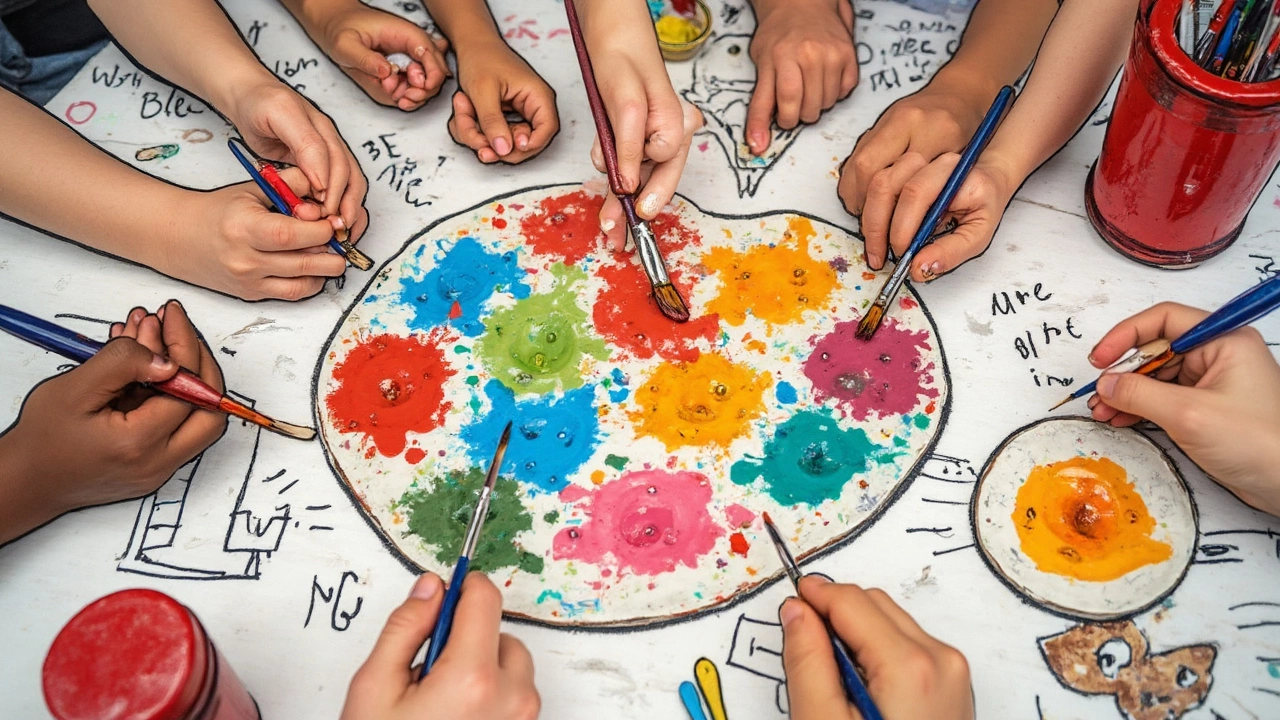
Hands-On: How to Start Creating Abstract Art
If you want to jump into abstract art, you don’t need to break the bank or get lost in fancy techniques. Big names like Wassily Kandinsky started with simple experiments—he was more interested in playing around with shapes and colors than making perfect pictures. That’s the spirit you’ll want to tap into.
First up, set up your space. It doesn’t need to be some Instagram-worthy studio. Kitchen tables or garage floors work fine. Just cover your surfaces because splatters and spills are part of the game. Next, grab your supplies. You only really need:
- Thick or thin acrylic paint (cheap is fine for starters)
- Some brushes of different sizes
- A canvas, heavy paper, or even some cardboard
- Rags or sponges for texture
- Old clothes you don’t care about
The fun part is just getting started. Here’s a simple framework to help you:
- Pick a couple of colors you like. Don’t overthink it—just grab what feels good.
- Decide if you want to paint standing up for big gestures, or sitting for more control.
- Get some paint on the canvas. Streaks, dots, messy shapes, anything—it all counts.
- Try layering colors. Let one dry, then add another on top. Use a credit card or your fingers for different effects.
- Step back every now and then. Does it have rhythm or energy? If not, mess with it some more.
If you like more structure, check out this quick comparison between simple abstract techniques and what you might need to start:
| Technique | Main Tool | Skill Level Needed |
|---|---|---|
| Pouring | Cups, canvas | Beginner |
| Palette Knife | Palette knife, paint | Beginner to Intermediate |
| Collage | Paper, glue | Beginner |
Quick tip: Most beginners spend about 70% of their first paintings just experimenting with color and texture, and that’s how it should be. If you hit a wall, look at other artists online—Instagram and YouTube are packed with short, straight-to-the-point demos. Borrow ideas, but don’t stress about copying. You’ll find your own twist just by doing.
Remember, you don’t need a single “deep” idea when you get started. As you paint and tinker, themes or feelings will come through. The best way to learn is just to keep moving the brush, step back, and see where things go. If it’s fun or even just weird, you’re on the right track.
What Separates a Hobbyist from a Pro?
This is where things get real. A lot of people can make a nice-looking abstract painting on their kitchen table, but what does it take to be seen as a true pro in the abstract art world? It’s not just about talent or how wild you get with a brush.
The first big difference is consistency. Pros don’t just make one cool piece—they create a solid body of work, and you can usually spot their style across everything they do. That personal style? It takes time to build, and it’s a huge deal in abstract art circles.
Next up is intent. Pros have a reason behind what they do, even if the result still looks a bit wild or random. They don’t just splash paint—they think about color choices, shapes, and how everything fits together. Critics and galleries can often tell if something was made on a whim or if there’s meaning or technique behind it.
Another difference: commitment. Pros make their art a big part of their life. They keep making, learning, and showing their work even when it’s hard to get noticed. Getting your art in a gallery? That’s not just luck. Most artists send out tons of emails to curators and put in late nights prepping for shows.
If you ever wonder what really sets a professional apart, it helps to look at how they work. Here’s a quick comparison:
| Aspect | Hobbyist | Pro Abstract Artist |
|---|---|---|
| Dedication | Paints for fun/relaxation | Paints regularly, often for years |
| Style | Usually experiments or copies | Has a distinct, recognizable style |
| Technique | Self-taught, little research | Makes use of art theory, intentional techniques |
| Exposure | Shares on social media or with friends | Exhibits in galleries, joins art communities |
| Income | Rarely sells, or sells rarely and cheaply | Sells consistently, prices work confidently |
If you want to cross that line from hobby to pro, here’s what actually helps:
- Work regularly and keep evolving, even when no one’s watching
- Start building a series—a group of paintings that work together or tell a story
- Don’t be afraid of feedback, good or bad
- Show your art anywhere you can—online shops, local cafes, group shows
- Look at what working abstract artists are doing and learn from their process
The truth? You don’t need to be born a genius to become a abstract art pro. But you do need to put in the hours, stick with it, and really care about getting better. That’s what separates the weekend dabbler from the artist whose work ends up selling (and remembered).
Tips to Find Your Own Style and Voice
Figuring out your own style in abstract art isn’t some magical thing that just lands in your lap. Even the most famous abstract artists went through years of experimenting, copying others, and making paintings they later called junk before something clicked.
First, don’t stress about being original on day one. Most beginners start by mimicking artists they admire—think Kandinsky, Rothko, or Joan Mitchell. Over time, your own preferences and quirks sneak in. Joan Mitchell said it best:
“I don’t set out to make a painting about a flower or a place. I just paint.”
Here’s what actually helps people find their groove in abstract art:
- Experiment with Everything: Try different paint types (acrylic, oil, spray), surfaces (canvas, paper, old wood), and tools (brushes, palette knives, sponges—even your fingers). You’ll quickly notice what feels fun versus what feels forced.
- Set Limits for Yourself: Oddly enough, picking a few colors or shapes to work with can kickstart creativity. Famous minimalist Ellsworth Kelly stuck to bold blocks of color but kept it fresh each time.
- Work In Series: Don’t just stop after one painting. Make five or ten versions of the same idea. You’ll develop deeper thoughts about what you like and what you want to change.
- Show Your Work Around: Even if it’s just friends and family, honest feedback is fuel. Sometimes what catches people’s eye isn’t what you expect.
- Keep a Sketchbook: Doodling every day, jotting ideas, or snapping phone pics of things that inspire you helps create a visual “library” to pull from. Abstract artist Gerhard Richter famously kept thousands of sketches and notes.
Curious how real-life abstract artists practiced? Here’s a quick look at how much they painted before nailing their own voice:
| Artist | Years Before Famous Style | Paintings Before Breakthrough |
|---|---|---|
| Wassily Kandinsky | 12 | Over 300 |
| Jackson Pollock | 10 | About 200 |
| Helen Frankenthaler | 8 | More than 150 |
Bottom line? Your style is just the stuff you do over and over—colors you always grab, shapes you tend to doodle, techniques you mess with until they feel right. Don’t race it. The more you make, the quicker your own approach stands out from the rest.
